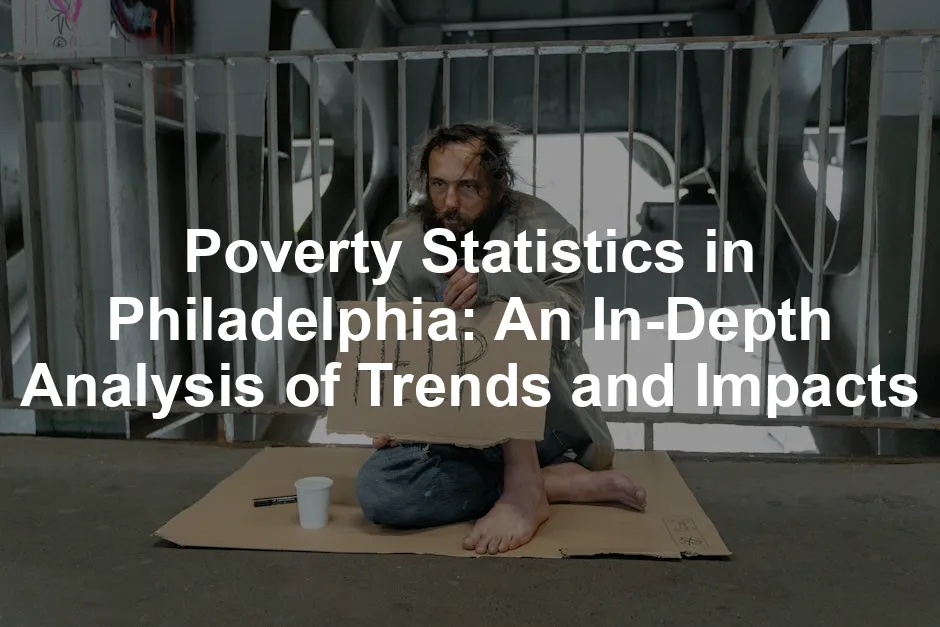Introduction
Ah, Philadelphia! The city of brotherly love, cheesesteaks, and… a complicated relationship with poverty. It’s like that friend who always shows up to the party, uninvited, but you can’t help but love them anyway. The paradox of this vibrant city is striking. On one hand, you have a rich tapestry of history, art, and culture; on the other, many residents struggle with economic hardship.
Understanding poverty statistics in Philadelphia isn’t just a tedious exercise in number-crunching. It’s crucial for urban planning, policy-making, and raising community awareness. These numbers tell stories—stories of families working hard to make ends meet, of children facing uphill battles in education, and of neighborhoods fighting against the odds.
The significance of these statistics becomes even clearer when we consider Philadelphia’s designation as one of the poorest major cities in the U.S. With a poverty rate that hovers around 21.7%, it’s a stark reminder that while we might be known for our historic landmarks, we also carry the weight of significant socioeconomic challenges. In this section, we’ll unpack the critical poverty trends in Philadelphia, revealing how the city’s economic landscape has shaped the lives of many residents.
While delving into the history of poverty, you might want to reflect on how our government has shaped these realities. Consider reading The Color of Law: A Forgotten History of How Our Government Segregated America by Richard Rothstein. This book dives deep into the systemic issues that have contributed to the current state of poverty and segregation in our cities.
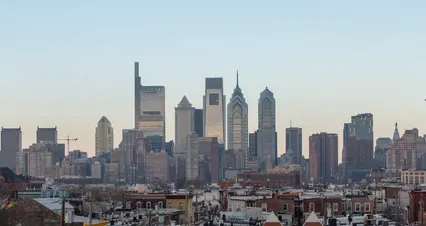
Summary of Key Points
Let’s sum up the key findings regarding poverty in Philadelphia, a city with a poverty rate that’s both a mark of shame and a call to action. As of 2022, Philadelphia boasts a poverty rate of 21.7%, a decrease from 28.4% in 2011, yet it still holds the title of the poorest big city in America. This statistic reveals a complex narrative of improvement amidst ongoing challenges.
Historical trends show fluctuations, with poverty rates peaking at 28% during the economic downturn in 2011. Racial disparities are glaring, as approximately 25% of Black residents and 40.2% of Latinx residents live in poverty, compared to 12.7% of white residents. This inequality begs the question: What are the underlying causes of poverty in this city?
The implications of these statistics extend beyond mere numbers. Poverty directly impacts health outcomes, educational opportunities, and overall community stability. For instance, children in low-income households are significantly less likely to achieve educational milestones. This creates a cycle that perpetuates poverty across generations.
If you’re looking for a thought-provoking read that dives into the complexities of poverty and its impacts, check out Evicted: Poverty and Profit in the American City by Matthew Desmond. It sheds light on the housing crisis and its direct correlation with poverty in urban settings.
As we dive deeper into this blog post, prepare to uncover not only the statistics but also the stories behind them. The statistics might be stark, but they are simply the beginning of understanding the multifaceted issue of poverty in Philadelphia. How did we get here, and what steps are being taken to create a brighter future for all Philadelphians? Stick around to find out!
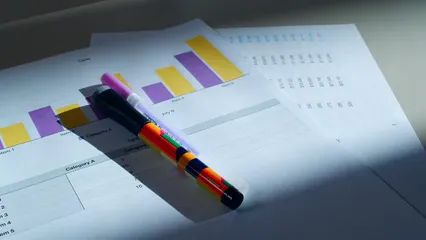
Understanding Poverty in Philadelphia
Overview of Poverty Statistics
Philadelphia continues to carry the weight of being the poorest large city in the United States. In 2022, the poverty rate stood at 21.7%. While this marks a notable drop from 28.4% in 2011, it still places Philadelphia at the top of the list for urban poverty. To put it bluntly, that’s not a trophy anyone wants to win.
Looking at the historical context, the poverty rate fluctuated significantly from 2000 to 2022. In 2000, the rate was around 23%, dipping to a peak of 28% in 2011 during the economic downturn. Thankfully, the last decade has seen a gradual decline. However, even now, nearly one in five Philadelphians lives below the federal poverty line. This is a stark reminder of how the city’s economic challenges are far from over.
Infographics and charts can vividly illustrate these trends. A visual representation of the poverty rate over the years would show the gradual decline, yet the persistent high figures. Such visuals can make the data more digestible, helping us grasp the scale of the issue without losing our sanity over numbers.
While you’re at it, why not equip yourself with the right kitchen tools to whip up some budget-friendly meals? Consider investing in an Instant Pot Duo 7-in-1 Electric Pressure Cooker. It’s a lifesaver for creating quick, healthy meals that won’t break the bank!

Demographic Disparities
Poverty in Philadelphia is not a monolithic experience; it varies significantly across racial and ethnic lines. A staggering 25% of Black Philadelphians live in poverty, while 40.2% of Latinx residents find themselves in similar circumstances. In contrast, only 12.7% of white residents face poverty. These statistics highlight a troubling reality: economic hardship disproportionately affects communities of color.
These disparities can’t be chalked up to individual choices; systemic factors play a crucial role. Generations of discrimination, unequal access to quality education, and limited job opportunities have created a scenario where many people of color are trapped in a cycle of poverty. It’s as if the system is rigged against them, making it harder to climb the economic ladder.
Consider the historical context. For many Black and Latinx families, the road to prosperity has been obstructed by redlining, discriminatory lending practices, and inadequate public services. It’s no wonder that poverty rates remain stubbornly high among these groups. By examining these disparities, we can better understand the broader social implications of poverty in Philadelphia, and why addressing systemic issues is vital for creating lasting change.
While we’re discussing the importance of education, you might find it enlightening to read Nickel and Dimed: On (Not) Getting By in America by Barbara Ehrenreich. This book provides a first-hand account of the struggles faced by low-wage workers and the systemic barriers to economic mobility.

In summary, while Philadelphia shows signs of progress in reducing its overall poverty rate, the reality is more complicated. The city is still grappling with significant economic disparities, particularly among racial and ethnic groups. Understanding these nuances is essential for anyone interested in tackling poverty head-on. It’s not just about the numbers; it’s about the lives behind them.
The Neighborhood-Level Distribution of Poverty
Geographic Analysis of Poverty
Poverty in Philadelphia isn’t playing fair. It’s unevenly distributed across the city’s neighborhoods, creating a stark contrast between the haves and have-nots. Some areas, like Germantown and Southwest Philadelphia, are grappling with high poverty rates, while others, such as Brewerytown, are experiencing the effects of gentrification.
According to the U.S. Census Bureau, nearly 25% of residents in certain neighborhoods live below the poverty line. This statistic is particularly pronounced in neighborhoods like Germantown, where economic challenges persist. In contrast, Brewerytown, which has seen an influx of new residents and development, is on the other side of the spectrum, with poverty rates dropping. Such disparities raise eyebrows—how can two neighborhoods just a few blocks apart tell such different stories?
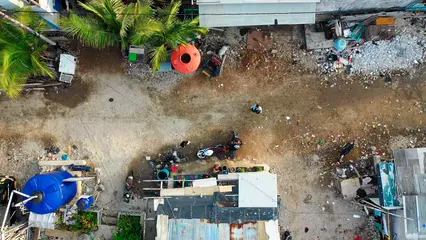
Visual aids, like maps, can help illustrate these differences. Imagine a colorful map where certain areas glow red, indicating high poverty rates, while others shine green, showing zones of economic growth. This visual representation can drive home the point that poverty is not just a personal issue; it’s a geographic one.
A closer look reveals that areas with high poverty often correlate with historical disinvestment. Factors like redlining have played a significant role in shaping the economic landscape of these neighborhoods. For example, in Southwest Philadelphia, long-standing community struggles are compounded by a lack of investment in services and amenities. On the flip side, Brewerytown’s gentrification has attracted businesses and higher-income residents, leaving behind the original community members grappling with rising costs.
The Impact of Location on Economic Opportunities
Geography can be a powerful influencer of economic opportunities. In Philadelphia, where you live often dictates your access to jobs, education, and healthcare. Those dwelling in impoverished neighborhoods frequently face barriers that can feel insurmountable.
Studies have shown a strong link between neighborhood poverty and health outcomes. For instance, a higher concentration of poverty often leads to increased rates of chronic illnesses. Residents in low-income areas may lack access to quality healthcare facilities, making it harder to manage health conditions. In neighborhoods with limited grocery stores, residents might struggle to find affordable, healthy food, leading to poor nutrition and health issues.
Education is impacted too. Schools in high-poverty areas often have fewer resources. The cycle continues, as children from these neighborhoods face challenges that can hinder their educational achievements. In fact, reports indicate that students from low-income households are less likely to graduate high school or pursue higher education.
The implications are profound. A lack of access to opportunities can perpetuate a cycle of poverty. Without quality jobs, education, and healthcare, residents may find it nearly impossible to improve their circumstances. This situation emphasizes the need for targeted interventions that address the specific challenges faced by neighborhoods with concentrated poverty.
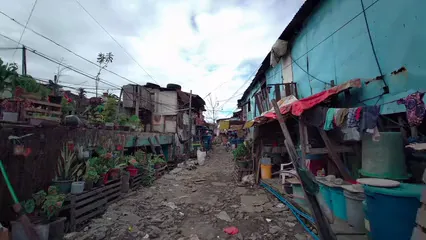
In conclusion, understanding the geographic distribution of poverty in Philadelphia is crucial. It’s not just about numbers; it’s about real lives affected by systemic issues. Addressing these disparities requires a comprehensive approach that considers the unique needs of each neighborhood. By recognizing the challenges and opportunities present in these areas, we can work towards creating a more equitable city for all residents.
The Broader Impact of Poverty
Poverty and Health
Poverty doesn’t just impact wallets; it takes a serious toll on health. Think of it this way: when you’re stressed about bills, your body feels it too. Chronic stress is rampant among low-income individuals, leading to a host of health issues. From heart disease to diabetes, the correlation between poverty and health problems is undeniable.
Statistics paint a stark picture. According to the Philadelphia Department of Public Health, neighborhoods with higher poverty rates see worse health outcomes. In fact, 35% of residents in these areas report poor or fair health. That’s more than double the rate of those in low-poverty neighborhoods, where only 14% report similar issues. The difference is alarming!

Access to healthcare is another major player. Low-income individuals often struggle to find quality medical care. Many lack insurance or the means to cover out-of-pocket costs, leading to untreated conditions and increased hospital visits. The result? A healthcare system that’s strained, with emergency rooms becoming the go-to for routine care.
Take a moment to consider the story of a single mother in Southwest Philadelphia. She works multiple jobs but still can’t afford health insurance. When her child gets sick, she’s forced to choose between a trip to the ER or skipping meals. Sadly, this is the reality for many Philadelphians.
Moreover, studies show that areas with concentrated poverty have higher rates of smoking and obesity. In neighborhoods plagued by economic hardship, access to fresh fruits and vegetables is often limited. Instead, residents turn to cheaper, unhealthy food options, creating a vicious cycle of poor nutrition and health complications. It’s not just about eating habits; it’s about survival.
The implications are clear. As poverty persists, so do health disparities. Addressing these issues requires comprehensive solutions that tackle both economic conditions and healthcare access. If we want to break the cycle, we must invest in community health initiatives that empower residents to lead healthier lives.
Educational Outcomes
Education and poverty are like two sides of a coin—each influences the other significantly. In Philadelphia, children growing up in low-income households often face educational hurdles that can last a lifetime. Did you know that 67.5% of third graders in the School District of Philadelphia scored below proficiency in literacy? That’s a staggering statistic that highlights the educational challenges faced by many.
Graduation rates tell a similar story. Students from low-income families are much less likely to graduate high school. In fact, only 69.2% of ninth graders in 2019 graduated in four years. This rate is 16.7 points below the national average. When you consider the barriers these kids face, it’s no surprise. Under-resourced schools struggle to provide the support students need to thrive.

Let’s hear from a local educator who works in a high-poverty school. She describes how lack of resources leads to larger class sizes and fewer learning materials. “It’s heartbreaking,” she says, “watching kids with so much potential fall behind simply because they don’t have the same opportunities as others.”
The impact of poverty on education doesn’t stop at graduation. Adults who struggle with literacy often find it difficult to secure stable employment. In Philadelphia, about 17.4% of adults lack a high school diploma. Without it, they’re left with fewer job prospects and lower wages.
This creates a generational cycle of poverty. Children who grow up in low-income households are less likely to pursue higher education, further limiting their opportunities. The statistics are sobering: only 28% of Philadelphians aged 25 and older hold a bachelor’s degree or higher.
To break this cycle, we need to invest in education. Schools in impoverished neighborhoods require more funding and resources. Community programs that provide tutoring, mentorship, and enrichment activities can make a significant difference. By giving these children a fighting chance, we can help foster a brighter future for Philadelphia.
Policy Perspectives and Solutions
Current Initiatives
Philadelphia is taking strides to combat poverty through its Poverty Action Plan. This ambitious initiative aims to lift 100,000 residents out of poverty by 2024. Local leaders recognize that tackling poverty requires coordinated efforts across various sectors, including housing, wages, and education.
Housing stability is a critical goal of the plan. Many low-income families face the threat of eviction, leaving them in precarious situations. The city has introduced policies to improve access to affordable housing, including increased funding for housing assistance programs. Mayor Cherelle Parker emphasizes, “Everyone deserves a place to call home. It’s fundamental to breaking the cycle of poverty.”

Wages are another focal point. Many people in Philadelphia work low-wage jobs that barely cover basic living expenses. Local leaders are advocating for a minimum wage increase, arguing that a living wage can help families thrive. “Low pay is keeping people in poverty,” states state Senator Art Haywood, highlighting the urgent need for change.
Education initiatives are also part of the plan. By investing in schools located in high-poverty areas, the city aims to provide children with the resources they need to succeed. This includes hiring more teachers, reducing class sizes, and enhancing after-school programs. Education is a powerful tool for breaking the cycle of poverty, and Philadelphia is making it a priority.
However, challenges remain. While the Poverty Action Plan represents a positive step forward, experts caution that success hinges on consistent leadership and community involvement. Bill Golderer, president of the United Way, notes that “ad-hoc solutions won’t cut it.” A strategic, long-term approach is essential for sustainable change.
In conclusion, Philadelphia’s Poverty Action Plan highlights the city’s commitment to addressing the complex issue of poverty. By focusing on housing, wages, and education, we can create a more equitable environment for all residents. The journey is long, but with determination and collaboration, hope for a brighter future is within reach.
Community Perspectives
Residents of Philadelphia have unique stories that illustrate the daily struggles associated with poverty. Siti, a working-class woman from South Philadelphia, shares her frustration about rising costs. “We have to fight for it, but we struggle,” she laments, highlighting the challenges many face just to make ends meet.
Sabrina Dutton, a single mother from Germantown, also speaks candidly about her experience. “It’s cheaper to live where I am now, but it doesn’t feel like home. Everyone wants to live in a nice neighborhood, but Philadelphia doesn’t provide that.” Her words resonate with countless families caught in a web of financial insecurity.
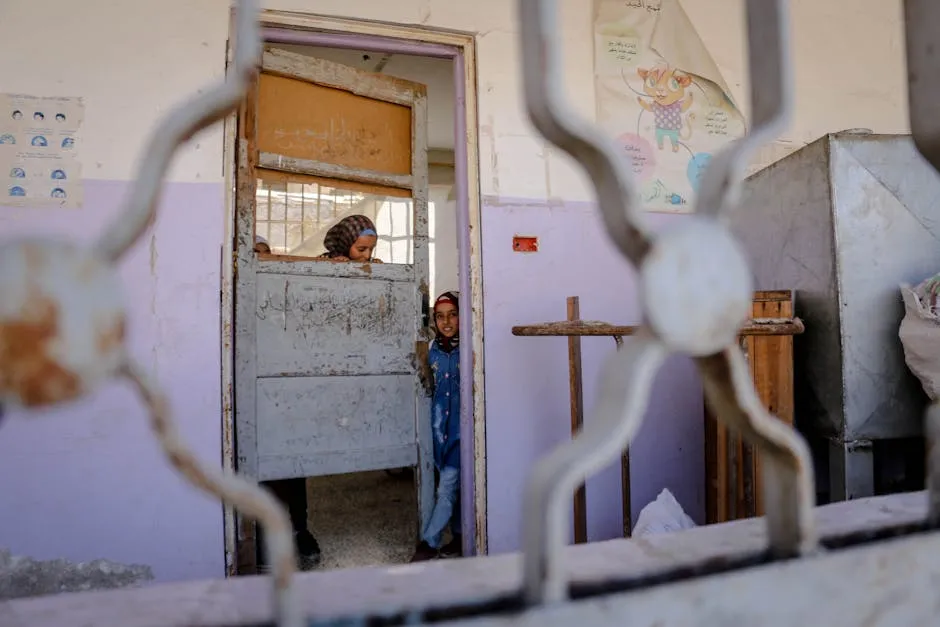
Grassroots initiatives are emerging to combat these issues. One notable effort is the Philadelphia Poverty Action Plan. This initiative aims to lift 100,000 residents out of poverty by focusing on housing, wages, and education. Local leaders emphasize that these efforts must be community-driven.
Organizations like Project HOME and the United Way are actively involved in providing resources and support. They focus on employment training, affordable housing, and mental health services. Bill Golderer, president of the United Way, stresses the importance of long-term solutions. “Ad-hoc solutions won’t cut it. We need strategies that empower individuals,” he explains.
And speaking of empowerment, consider investing in tools that can enhance your home experience. A Keurig K-Elite Single Serve Coffee Maker can not only make your mornings brighter but also save you money on daily coffee runs! Who doesn’t love a good cup of joe without the wait?

These community-driven stories and initiatives highlight resilience in the face of adversity. They remind us that while statistics outline the problem, it’s the human experience that truly reveals the complexity of poverty in Philadelphia.
FAQs
What is the current poverty rate in Philadelphia?
As of 2022, Philadelphia’s poverty rate stands at 21.7%. This represents a decrease from 28.4% in 2011, marking the lowest rate in nearly two decades. However, this statistic still positions Philadelphia as the poorest large city in the United States, raising concerns about systemic issues that persist.
How does Philadelphia’s poverty rate compare to other cities?
When compared to other major cities, Philadelphia’s poverty rate is notably high. Houston, for instance, has a rate of 20.7%. Chicago’s rate is around 21.6%, while Detroit remains an outlier with a staggering 36.4%. These comparisons highlight the unique challenges Philadelphia faces in addressing poverty.
What are the main factors contributing to poverty in Philadelphia?
Several systemic issues contribute to the high poverty rate in Philadelphia. Economic factors, such as job scarcity and low wages, play a significant role. Additionally, historical injustices, including redlining and unequal access to education, create barriers that perpetuate poverty, particularly within communities of color.
How can individuals help address poverty in Philadelphia?
There are many ways individuals can contribute to alleviating poverty in Philadelphia. Volunteering with local organizations, donating to food banks, or supporting educational programs can make a difference. Advocacy for policy changes that improve housing, wages, and access to healthcare is also crucial. Every action counts in the fight against poverty.
Please let us know what you think about our content by leaving a comment down below!
Thank you for reading till here 🙂
To understand the broader context of poverty, exploring poverty statistics in Texas can provide valuable insights into similar socioeconomic challenges faced in other regions.
And for those lazy days when you just want to kick back, consider investing in a Fire TV Stick 4K Streaming Device. Because sometimes, the best way to learn about poverty is through a documentary binge-watch session!
All images from Pexels

